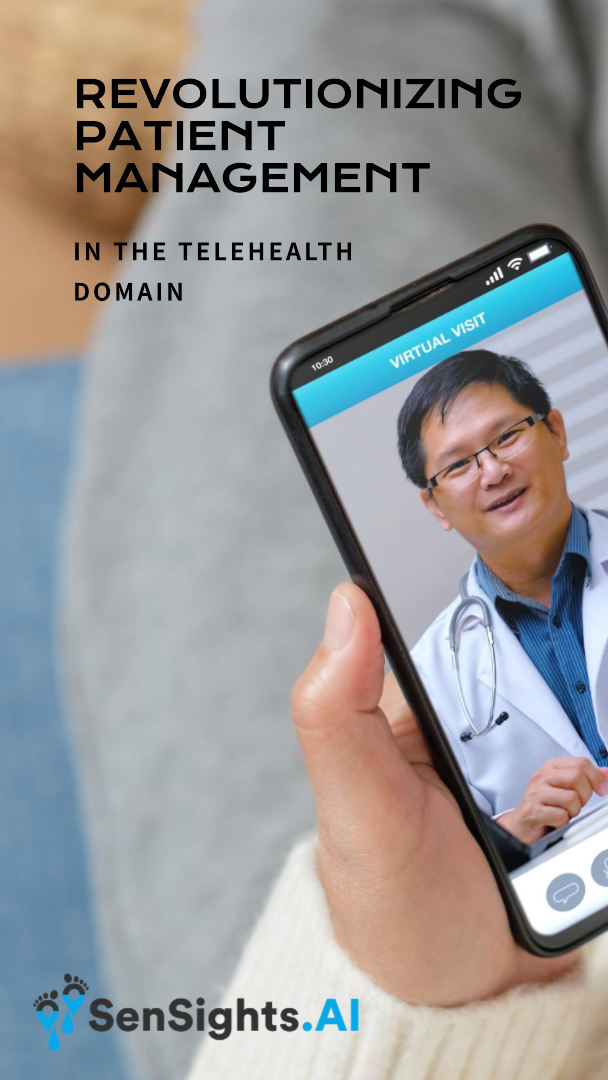Medically Reviewed By: Dr Alex Evans
Image Credit: Canva
Key Takeaways
- Telehealth transcends geographical boundaries and offers patients flexible, accessible, and personalized care tailored by real-time data.
- The advantages of telehealth include improved accessibility, cost-effectiveness, real-time monitoring, and patient empowerment.
- Despite challenges like data security and the need for robust infrastructure, the future of telehealth promises AI-driven diagnostics, virtual therapies, and an even more patient-centric approach
Looking for reliable health monitoring devices?
In the rapidly evolving landscape of healthcare, telehealth is rapidly emerging as a harbinger of the medical practice paradigm of the future – the very near future. But this change has necessitated taking a fresh perspective on patient management. As we explore the telehealth domain, we become increasingly aware that traditional methods are relinquishing their position to a new, more effective paradigm. This transformational shift in patient management deserves a much more detailed exploration than it has been granted so far. So come with us; let’s change that and try to find out what Telehealth really means for us all
Position! Position!! Position!!! – The key differentiator between Traditional vs. Telehealth Patient Management
The principal difference between traditional and telehealth patient management is the positioning of the service; while the former relies heavily on face-to-face interaction, the latter leverages technology to bridge geographical gaps and transcend physical barriers.
“I’ll be there for you” – Decentralization of Care
Telehealth brings care to the patient’s doorstep. No longer confined to hospital corridors or clinic walls,, care can now be delivered wherever the patient is, breaking down accessibility barriers.
“Trust me; I know what I’m doing” – Data-Driven Decisions
Modern telehealth platforms are equipped with robust data analytics capabilities. This allows for a more informed approach to patient management. Treatment plans are tailored based on real-time data, ensuring a higher degree of personalization.
“Bend it like Beckham” – The Flexibility Quotient
Telehealth introduces unprecedented flexibility into patient management,a bit like Beckham’s knee back in the day Whether it’s scheduling, consultation, or follow-ups, both patients and providers benefit from a more adaptable system that they have the ability to bend to thier needs.
Advantages of the New Paradigm
“Whenever; Wherever” – Improved Accessibility
When patients can access quality care regardless of geographical location, we’re able to save lives and improve health even for patients in remote or underserved regions, bridging a long-standing healthcare gap.
Cost-Effective Care
With reduced overheads and the elimination of ancillary costs like travel, telehealth proves more cost-effective for many patients, making healthcare more affordable.
Real-time Monitoring
With wearable tech and IoT devices integrating with telehealth platforms, continuous patient monitoring becomes feasible. This leads to timely interventions and better health outcomes.
Empowering Patients
This paradigm shift places a strong emphasis on patient empowerment. With access to their health data and the ability to manage their appointments, patients play a more active role in their health journey.
Challenges and the Way Forward
No transformation comes without its own set of challenges. Patients and providers both have valid concerns around data security, the need for robust internet infrastructure, and the adaptation curve. However, as technology advances and stakeholders work collaboratively, these challenges will be mitigated.
Looking ahead, we can envision a telehealth environment where AI-driven diagnostics, virtual reality therapies, and even drone-delivered medications become the norm. As the frontiers of technological possibility keep getting pushed forward to reflect the needs and realities of a new healthcare era, patient management will continue to evolve with it..
This shift in patient management within the telehealth domain is not just a change; it’s a revolution. It redefines what patient-centric care truly means, setting the stage for a more vibrant, more inclusive healthcare future.
Want to know more about the future of telehealth?
MarkiTech has various subsidiaries with products and services targeted towards digital healthcare and telehealth/telemedicine and virtual clinic with laser focus on helping seniors age in place and help their caregivers.
Sensights.ai is a company focused on remote patient monitoring and aging solutions, which utilizes artificial intelligence to track the health of patients and keep a round-the-clock connection between caregivers and patients.
As well, Veyetals uses rPPG and AI modeling algorithms to capture the light reflected by the blood vessels under a patient’s skin to measure vitals anytime, anywhere.
Lastly, we are now launched our latest Mental Health AI Scribe tool called CliniScripts.com

